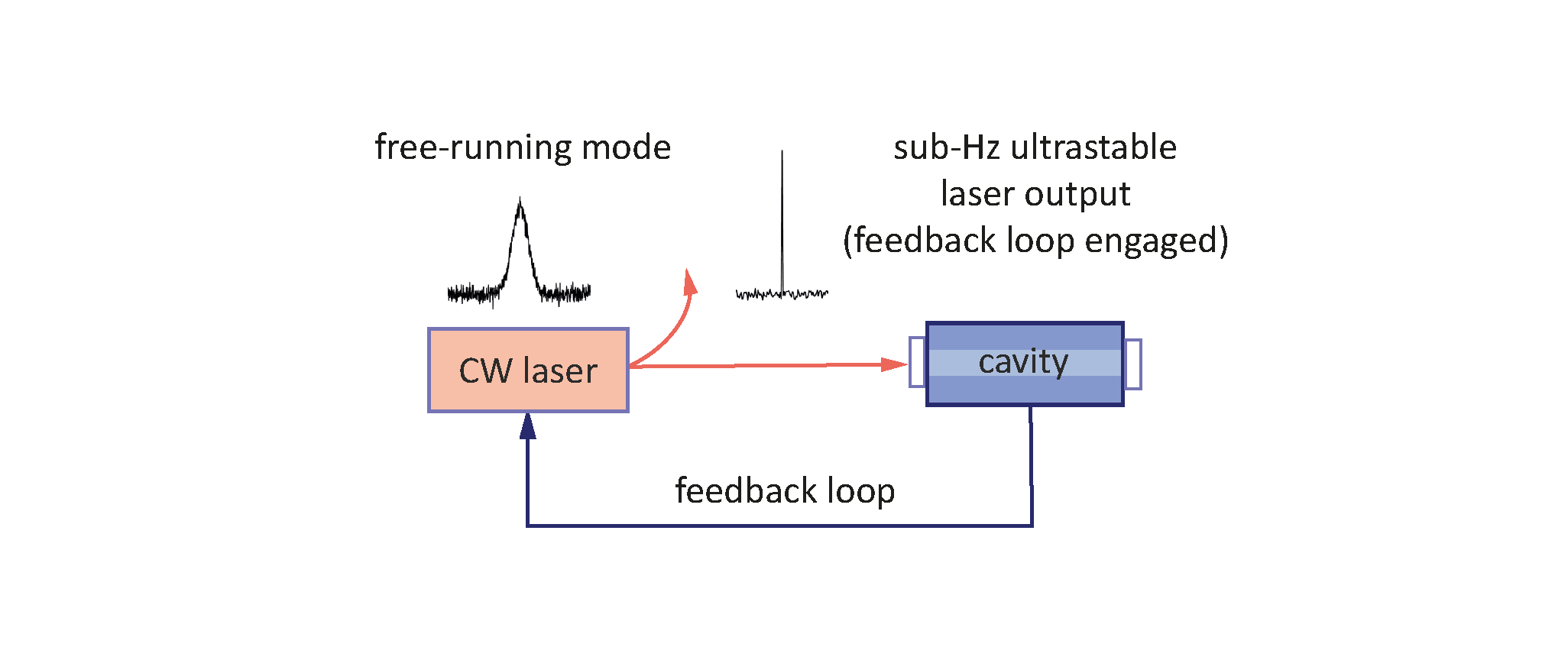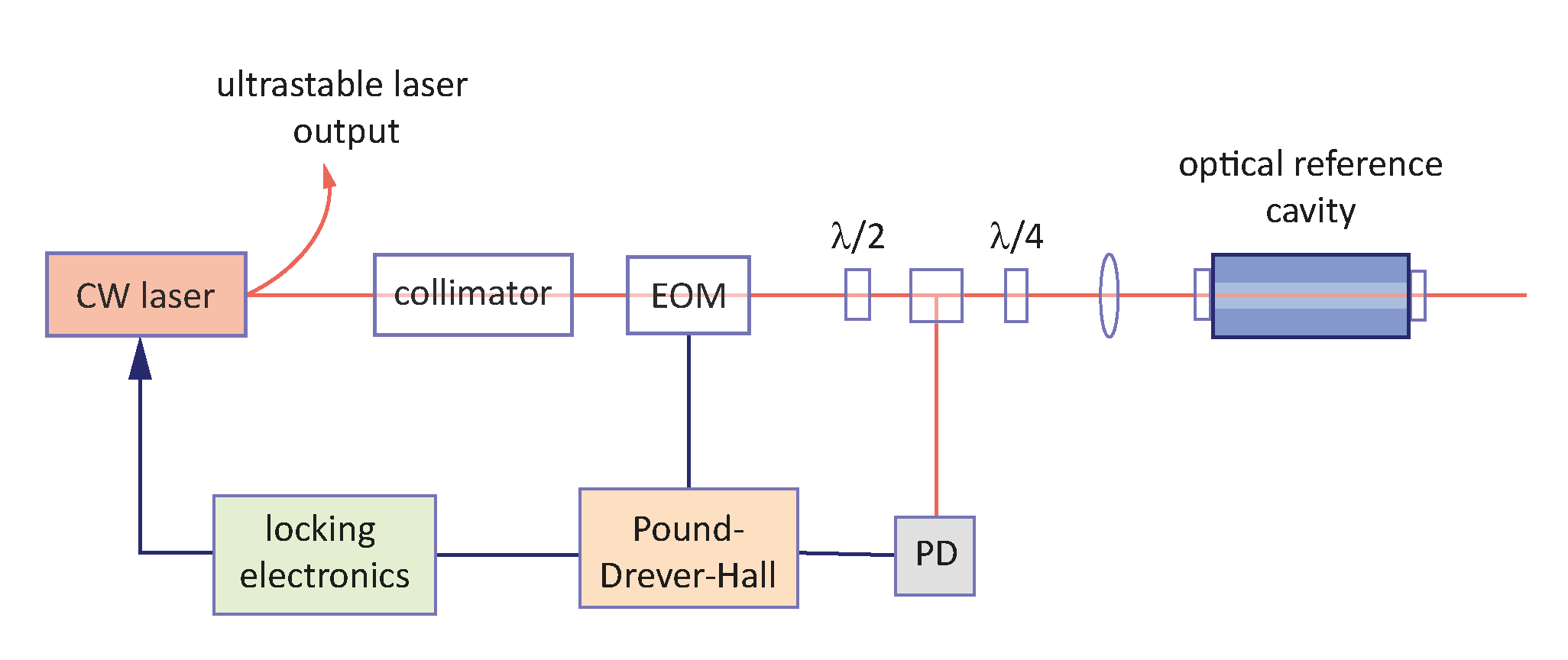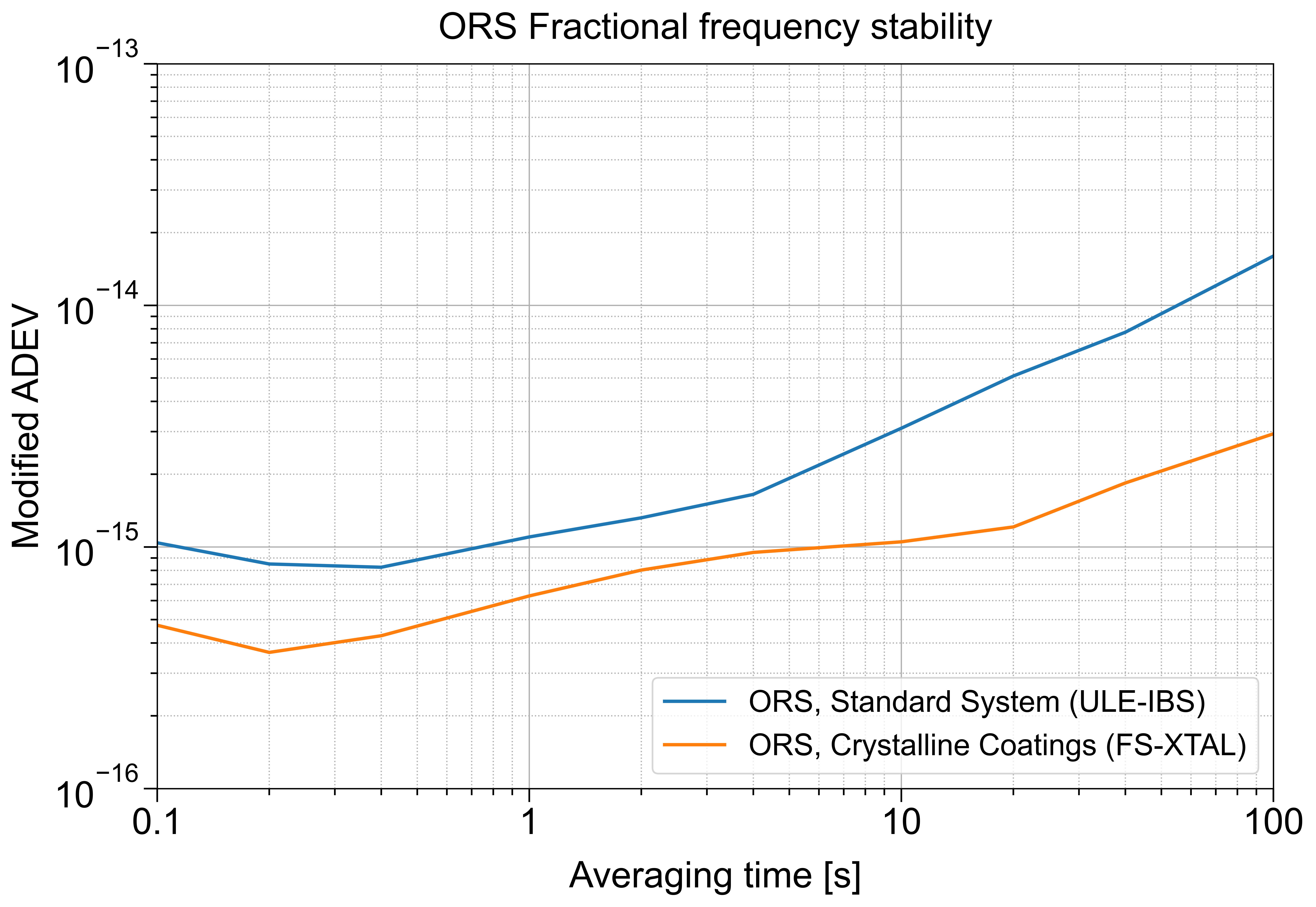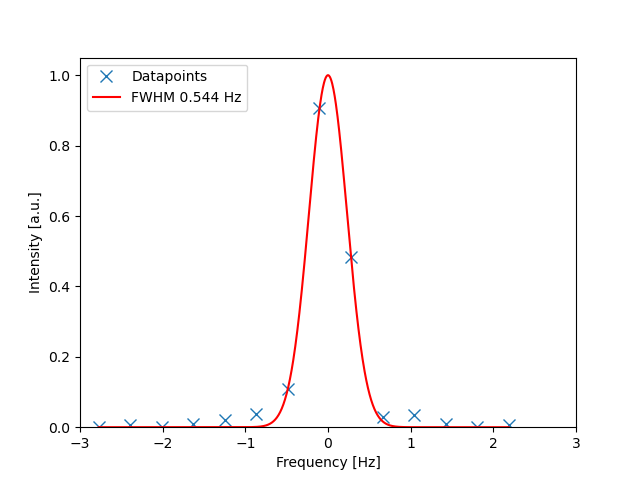Technology Primer
Beschreibung
Menlo Systems´ Optical-Reference-System (ORS) product range offers leading-performance, cost-effective and compact ultrastable laser solutions capable of satisfying challenging requirements for a broad range of applications, including quantum computing, high-resolution atomic and molecular spectroscopy, and optical clocks. In this technology primer, an introduction to the concept of laser stabilization using an external optical reference cavity is provided, highlighting the key benefits of Menlo Systems´ ultrastable-laser solutions.
Laser Frequency Stabilization with Optical Reference Cavities
Environmental fluctuations such as temperature changes, mechanical vibrations, or air-pressure variations can cause the frequency of lasers to fluctuate and drift over time. Moreover, the intrinsic noise of the laser gain medium and spontaneous emission processes pose a limit to the achievable frequency noise. In order to achieve a sub-Hz linewidth of the laser, one can stabilize it to the mode of a stable optical reference cavity using the Pound-Drever-Hall (PDH) scheme.

Figure 1: Principle of operation of an ultrastable laser system.
A high-finesse Fabry-Pérot cavity serves as the optical reference and represents the central part of a cavity-stabilized laser system. It comprises two mirrors, equipped with high-reflectivity coatings which are optically contacted onto the spacer. When the light enters the cavity, it undergoes multiple reflections between the mirrors, leading to constructive interference for certain wavelengths. This results in the transmission of specific cavity modes, creating a sharp spectral filter. The transmission resonances are equally separated in frequency space by the free spectral range (FSR), which is directly related to the cavity length (L) by the formula
FSR = c/2L ,
where c is the speed of light (for a cavity held in vacuum). Maintaining a constant length within the cavity necessitates special design considerations and robust shielding, to prevent temperature fluctuations from interfering with the stability of the optical system.
A key parameter that characterizes the cavity performance is the linewidth of the cavity, which can be improved by increasing the cavity length or by achieving a higher finesse. The optimization of the finesse (F) value, which directly relates to the reflectivity (R) of the mirrors,
F=(π√R)/(1-R) ,
requires the ability to manufacture mirrors with very high reflectivity. For a high-finesse Fabry-Pérot cavity, the linewidth of the resonant transmission is thus given by the ratio of the cavity free-spectral range (FSR) and the finesse value (F)
∆ν_FWHM=FSR/F ,
Therefore, careful engineering and optimization of the cavity design and its parameters, such as the finesse and cavity length, are the main ingredients for the stabilization of a free-running laser by means of a reference cavity to achieve narrow linewidths.
Menlo Systems´ ORS Ultrastable Lasers
To provide sub-Hz laser linewidths and the ultimate ORS stability (MADEV at 1s, crystalline coatings: 7∙10-16) required by the most demanding optical, atomic and metrological applications, Menlo Systems´ ORS employs a single-mode continuous-wave (cw) laser, an optical reference cavity with either a cylindrical (designed by the Physikalisch-Technische Bundesanstalt (PTB)) or cubic geometry (licensed from the National Physical Laboratory (NPL)), and the associated optical and electronic devices for the implementation of the Pound-Drever-Hall scheme, which offers a high sensitivity and a wide locking range.

Figure 2: Schematic of operation of an ultrastable laser system. A small fraction of the single mode laser light is directed into the reference cavity. The reflection off the cavity mirror is measured by a photodiode (PD) and the resultant electrical signal is converted to an error signal by the Pound-Drever-Hall method for feedback to the single mode laser.
In the PDH scheme, an electro-optic modulator (EOM) is used to generate sidebands, before sending the light towards the reference cavity. The light from the cavity, which is detected using a photodiode and demodulated using a phase-sensitive detector, contains information about the detuning of the laser carrier frequency from the cavity resonance. The resulting error signal is used to lock the laser frequency to the cavity using a PID feedback-control loop.
To ensure the stability of the reference cavity, and therefore of the ultrastable laser system, it is essential to isolate the cavity from environmental disturbances. This can be achieved by designing the cavity geometry such that it is intrinsically insensitive to vibrations, and by constructing the cavity spacer from ultra-low expansion (ULE®) glass, which has a vanishing thermal expansion coefficient for temperatures close to room temperature. In addition, the cavity temperature is stabilized through active feedback with TEC controllers and the time constant is increased using passive heat shields. By using vibration-isolation platforms, enclosing the cavity in a vacuum chamber and shrouding it in sound-deadening material the effects of vibrations, air pressure and acoustic noise are minimized.

Figure 3: Comparison of the ORS fractional frequency stability range achievable with the standard systems, which include ULE substrates and ionbeam-
sputtered mirror coatings (ULE-IBS), and with additional crystalline coatings used on fused silica substrates as cavity mirrors (FS-XTAL).

Figure 4: Demonstrated sub-Hz linewidth, characterized by beating an ORS at 1064 nm against another ORS operated at 1542 nm, using an Ultra- Low Noise (ULN) optical frequency comb to bridge the wavelength gap.
Conclusions
Benefitting from a decade of experience in developing and engineering ultrastable lasers, Menlo Systems guarantees the performance of every ORS system in accordance with your requirements and budget, providing you the following key benefits:
- Performance and portability.
Ultra-low phase noise and ultimate stability performance achieved in a single-rack solution.
- Saving time and money.
Investing in the proven and robust ORS solution from Menlo Systems designed for 24/7 operation could save you valuable resources in comparison to a home-built system, allowing you to focus on your research, experiments and applications.
- Quality control and components.
The ORS Systems are manufactured to meet strict quality standards and undergo rigorous testing and validation processes, and they have been independently proven to fulfil ESD tests required for CE certifications.
- Full system characterization.
To ensure that the systems are delivered in agreement with the required specifications, we fully characterize and qualify the ORS performance by comparison against another in-house ultrastable laser, or in a three-cornered hat measurement against two in-house ultrastable lasers using a frequency comb. - Minimal learning curve.
Menlo Systems´ ORS products come with detailed documentation and technical support, helping you to readily integrate the system into your laboratory.
- Versatility and customization.
Each ORS system is configured to carefully meet all your requirements such as laser wavelength or absolute frequency of an atomic transition, power, frequency stability and phase noise.

-
Dr. Benjamin Sprenger
Ihr direkter Draht zu unserem Experten
Produktbroschüren
Bestellinformationen
- Code / Europäische Preisliste
- Technology Primer
Headquarters
sales@menlosystems.com
+49 89 189166 0
Menlo Systems, Inc.
ussales@menlosystems.com
+1 973 300 4490